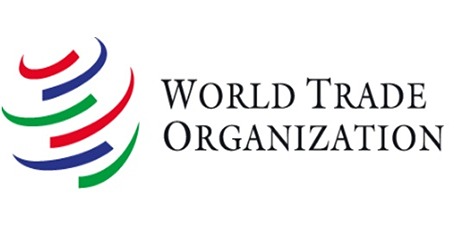In October 2024 the WTO published the latest Global Trade Outlook and Statistics. In the latest issue the WTO has revised its forecast for world merchandise trade growth in 2024 to 2.7%, which is slightly greater than the previous estimate of 2.6%. The forecast for 2025 is trade growth of 3.0%, down from 3.3% previously. The report notes that the demand for traded goods was weaker than expected in Europe in 2024 but the demand was stronger than foreseen in Asia.
The report suggests that world real GDP growth (at market exchange rates) is projected to remain steady at 2.7% between 2023 and 2025. The fastest growing region in 2024 is expected to be Asia, with output increasing to 4.0%; and the slowest growing region is expected to be Europe at 1.1%.
In the first half of 2024 the US dollar value of world merchandise trade was nearly unchanged from a year earlier. Services trade was higher by 8% in the first quarter. The rising trade volume and flat trade values suggest a decline in export and import prices of around 2.6%.
The report notes that the global economy is continuing to improve gradually, but there are disparities in economic performance across different economies and regions. Policymakers can bring about a soft landing depending on the timing and scope of interest rate cuts. In recent months, major economies including the United States and the European Union have begun to cut interest rates as inflationary pressures have eased. China has introduced a range of stimulus measures to counter the weak domestic demand, including interest rate cuts, reductions in bank reserve requirements and measures to reduce the costs of existing mortgages.
Lower inflation should lead to increased real household incomes and boost consumer spending, while the lower interest rates should lead to an increase in investment spending by businesses.
There are downside risks to the trade forecast due to the regional conflicts, geopolitical tensions and policy uncertainty. Any further escalation of the conflict in the Middle East could further disrupt shipping trade routes and could lead to an increase in energy prices owing to the importance of the region in petroleum production.
The report notes that the trade tensions between China and the United States have had a strong impact on trade between the two economies, compounded by the global uncertainty and geopolitical tensions following the start of the war in Ukraine. The decoupling of trade between the two economies has occurred across the entire range of goods, and since the Ukraine war began it has accelerated in complex products. An important factor has been the increase in reciprocal import tariffs between the two economies, targeting all types of products.












